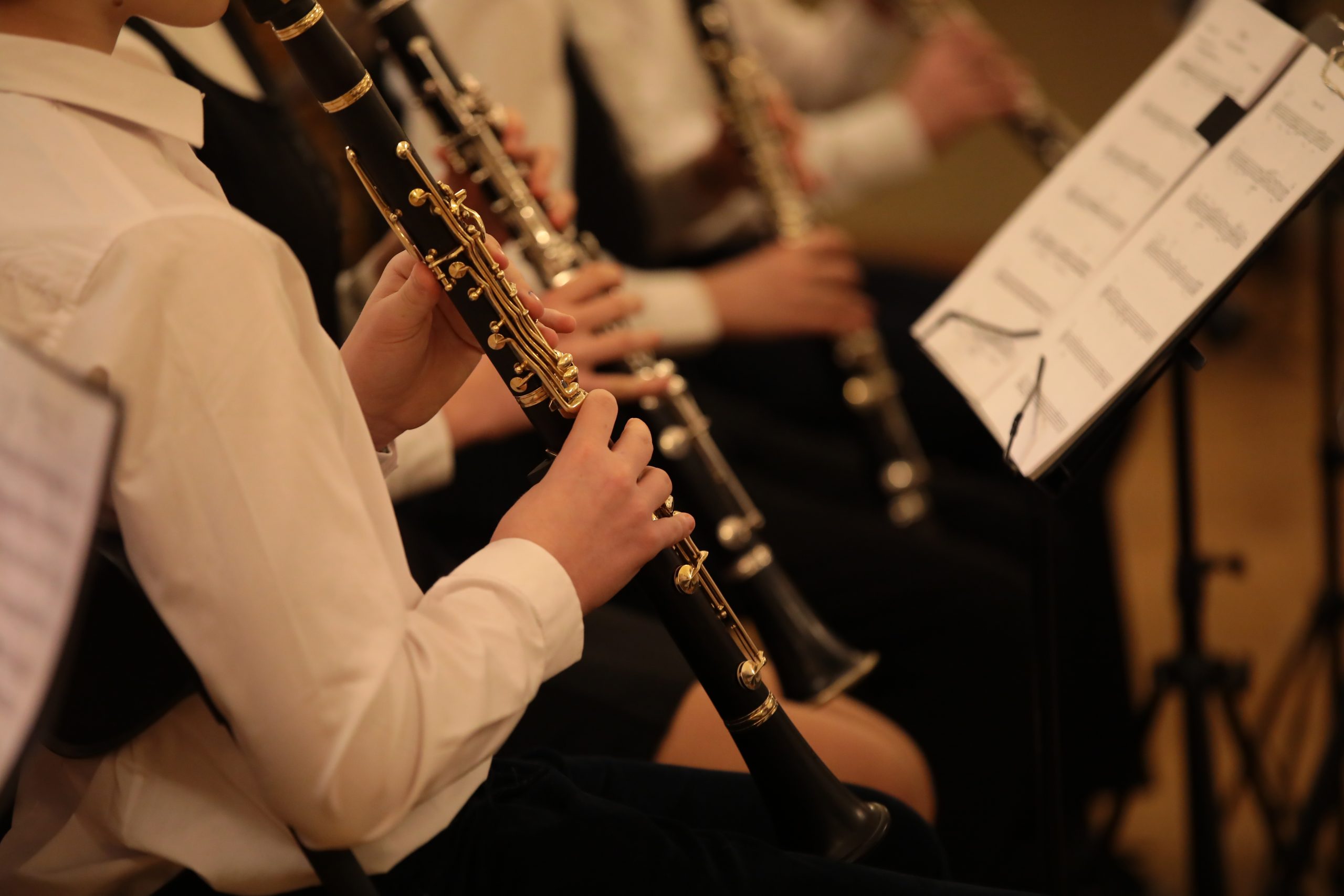Achieving a cohesive and balanced sound within the wind section of your orchestra or band can present many challenges. Here are a few strategies to maximize the beauty of sound in your ensemble.
Listening to develop a tonal concept
Perhaps the most effective way for young musicians to begin developing their sound is to have a model to which they can aspire. Some ideas:
– Find recordings of great players and ensembles. Play those recordings in class.
– Develop a list of links to the recordings for each instrument as well as full ensembles. Make listening assignments and evaluate through written reflection. SBO+: Visit www.ThomasPalmatier.com and click on “Sound Like This.”
-Bring in local players from a nearby university or professional orchestra to perform for your students. Bonus points if these players are teachers who would give your students private lessons.
– Take a field trip to a nearby college or university concert and/or a side-by-side rehearsal. You may be surprised at how willing these ensembles and their conductors would be to work with your students.
Individual player development
Encourage private lessons. If there are good teachers in your area, can you bring them in to teach private lessons at your school? If the cost of lessons is an issue, do you have a booster group that can fund scholarships? Are there music majors at a local university who would teach at a more affordable rate? Online lessons are not ideal, but they might be the best alternative. Be creative and do what you need to do to get teachers helping your students.
Ensemble development
Breaking down the components of a balanced and well-blended sound is vital to help students understand how to listen and respond. The concept of lower sounds being louder than higher sounds is an integral part of a good ensemble tone. I like to think of it as “nesting spheres of sound” with the lowest sounds being the outside sphere and each successive higher register fitting just inside the next lower register. A former player in the Cleveland Orchestra once told me that Maestro George Szell described octaves as “a two-to-one ratio” with each octave being half as loud as the one just below it. This is applicable within sections as well as within the entire ensemble.

I have taught this concept to my bands by assigning each instrument to SATB Groups
1 – Tubas, baritone sax, bassoon, bass clarinet
2 – Trombones, euphoniums, tenor saxophone
3 – Trumpets, horns, and alto saxophones
4 – Flutes, oboes, clarinets
Warm-ups were always rote exercises (often scales) that would begin with group 1 followed by each respective group entering in thirds (group 2 enters on “do” when group 1 gets to “mi”, etc). The musicians must attentively listen and try to “fit inside” the sound of the group just below them. This includes matching pitch and tone as much as possible.
Tone and intonation are inextricably linked. The concept is to play “in tune and in tone.” The use of drones and electronic tuners is a good starting place, but I always asked my students to turn off the tuners after the initial tuning period and use their ears. Don’t be afraid to spend significant time, especially early in the year, passing around a concert F to have players match. They should be matching pitch as well as tone within sections. This can take a long time, but the results will be well-worth the time it takes.
I recently interviewed Derek Scoles, director of bands at Thomas Worthington High School in Worthington, Ohio. His bands are known for their mature sound.
“The most basic thing I do is focus on sound alone. One of our biggest obstacles is putting things in front of our eyes that can distract our focus. Warm up and method books are great, but if you’re working to develop the sound, they can become a distraction. A very basic place to start is a concert F. Every day we start with the concert F whole note. We focus on basic breathing skills and fundamentals of sound. We start with a whole note. Then we do basic styles: 4 quarter notes in various styles. Once we’ve refined what that sounds like, looks like, and feels like, we apply them to scales. Instead of having them read the scales, I project a slideshow with letter names.”
“They have very little to look at, so they have nothing to think about other than how they sound. There are a lot of simple things kids can relate to, but they don’t ever see that “Oh, this is a high note” or “this is a low note” so they don’t think it may be too difficult to sound good. As a trumpet player, I used to see that high note and it would cause an initial tension. Now I’m seeing a letter on a screen that I don’t associate with high or low. I’m just making my best tone. Going chair by chair helps them hear how different their sounds are. We can pick the person who best produces the sounds we want and say “OK, let’s see if we can sound like person #5” for example. There’s a lot of imitation!”
I have found this approach to be extremely effective with young bands. I encourage you to try these techniques for yourself.





























